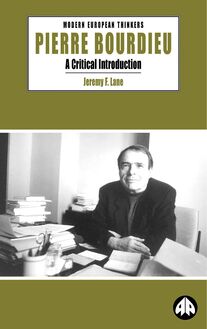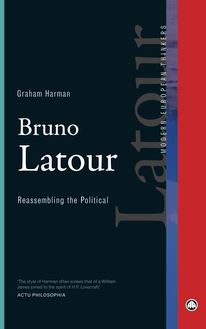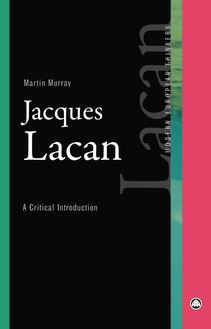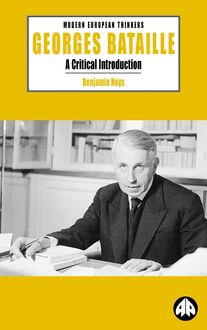-
 Univers
Univers
-
 Ebooks
Ebooks
-
 Livres audio
Livres audio
-
 Presse
Presse
-
 Podcasts
Podcasts
-
 BD
BD
-
 Documents
Documents
-
- Cours
- Révisions
- Ressources pédagogiques
- Sciences de l’éducation
- Manuels scolaires
- Langues
- Travaux de classe
- Annales de BEP
- Etudes supérieures
- Maternelle et primaire
- Fiches de lecture
- Orientation scolaire
- Méthodologie
- Corrigés de devoir
- Annales d’examens et concours
- Annales du bac
- Annales du brevet
- Rapports de stage
La lecture à portée de main
174 pages
English
Découvre YouScribe en t'inscrivant gratuitement
Je m'inscrisDécouvre YouScribe en t'inscrivant gratuitement
Je m'inscris
Obtenez un accès à la bibliothèque pour le consulter en ligne
En savoir plus
En savoir plus
174 pages
English
Obtenez un accès à la bibliothèque pour le consulter en ligne
En savoir plus
En savoir plus

Description
Habermas is a hugely influential thinker, yet his writing can be dense and inaccessible. This critical introduction offers undergraduates a clear way into Habermas’s concept of the ‘public sphere’ and its relevance to contemporary society. Luke Goode’s lively account also sheds new light on the ‘public sphere’ debate that will interest readers already familiar with Habermas’s work.
For Habermas, the 'public sphere' was a social forum that allowed people to debate -- whether it was the town hall or the coffee house, maintaining a space for public debate was an essential part of democracy. Habermas’s controversial work examines the erosion of these spaces within consumer society and calls for new thinking about democracy today.
Drawing on Habermas’s early and more recent writings, this book examines the ‘public sphere’ in its full complexity, outlining its relevance to today’s media and culture. It will be of interest to students and scholars in a range of disciplines across the social sciences and humanities.
INTRODUCTION
1. EXCAVATIONS: THE HISTORY OF A CONCEPT
i) Introduction
ii) The bourgeois public sphere
iii) The fall of the bourgeois public sphere
iv) Critical publicity and late capitalism
2. DISCURSIVE TESTING: THE PUBLIC SPHERE AND ITS CRITICS
i) Introduction
ii) Lessons from history
iii) Equality and emancipation
iv) Rationality and embodiment
3. RECONFIGURATIONS: THE PUBLIC SPHERE SINCE STRUCTURAL TRANSFORMATION
i) Introduction
ii) Scientism and politics
iii) System, lifeworld and communicative action
iv) The politics of the other
4. MEDIATIONS: FROM THE COFFEE HOUSE TO THE INTERNET CAFE
i) Introduction
ii) The fall of the agora
iii) A public sphere in bits?
5. UNFINISHED PROJECTS: REFLEXIVE DEMOCRACY
i) Introduction
ii) Reflexive agency
iii) Risk and reflexivity
iv) Revisiting the public sphere
BIBLIOGRAPHY
For Habermas, the 'public sphere' was a social forum that allowed people to debate -- whether it was the town hall or the coffee house, maintaining a space for public debate was an essential part of democracy. Habermas’s controversial work examines the erosion of these spaces within consumer society and calls for new thinking about democracy today.
Drawing on Habermas’s early and more recent writings, this book examines the ‘public sphere’ in its full complexity, outlining its relevance to today’s media and culture. It will be of interest to students and scholars in a range of disciplines across the social sciences and humanities.
INTRODUCTION
1. EXCAVATIONS: THE HISTORY OF A CONCEPT
i) Introduction
ii) The bourgeois public sphere
iii) The fall of the bourgeois public sphere
iv) Critical publicity and late capitalism
2. DISCURSIVE TESTING: THE PUBLIC SPHERE AND ITS CRITICS
i) Introduction
ii) Lessons from history
iii) Equality and emancipation
iv) Rationality and embodiment
3. RECONFIGURATIONS: THE PUBLIC SPHERE SINCE STRUCTURAL TRANSFORMATION
i) Introduction
ii) Scientism and politics
iii) System, lifeworld and communicative action
iv) The politics of the other
4. MEDIATIONS: FROM THE COFFEE HOUSE TO THE INTERNET CAFE
i) Introduction
ii) The fall of the agora
iii) A public sphere in bits?
5. UNFINISHED PROJECTS: REFLEXIVE DEMOCRACY
i) Introduction
ii) Reflexive agency
iii) Risk and reflexivity
iv) Revisiting the public sphere
BIBLIOGRAPHY
Sujets
Informations
| Publié par | Pluto Press |
| Date de parution | 20 octobre 2005 |
| Nombre de lectures | 2 |
| EAN13 | 9781849642019 |
| Langue | English |
Informations légales : prix de location à la page 0,6250€. Cette information est donnée uniquement à titre indicatif conformément à la législation en vigueur.
Extrait
Jürgen Habermas
Democracy and the Public Sphere
Luke Goode
P Pluto Press LONDON • ANN ARBOR, MI
First published 2005 by Pluto Press 345 Archway Road, London N6 5AA and 839 Greene Street, Ann Arbor, MI 48106
www.plutobooks.com
Copyright © Luke Goode 2005
The right of Luke Goode to be identified as the author of this work has been asserted by him in accordance with the Copyright, Designs and Patents Act 1988.
British Library Cataloguing in Publication Data A catalogue record for this book is available from the British Library
ISBN ISBN
0 7453 2089 9 hardback 0 7453 2088 0 paperback
Goode, Luke, 1971– Jürgen Habermas : democracy and the public sphere / Luke Goode. p. cm. –– (Modern European thinkers) Includes bibliographical references. ISBN 0–7453–2089–9 (hb) –– ISBN 0–7453–2088–0 (pb) 1. Habermas, Jürgen. Strukturwandel der Öffentlichkeit. 2. Sociology––Methodology. 3. Democracy. 4. Mass media––Political aspects. 5. Political participation. 6. Political sociology. 7. Internet––Political aspects. I. Title. II. Series. HM585.G66 2005 302.23––dc22 2005014366
10
9
8
7
6
5
4
3
2
1
Designed and produced for Pluto Press by Chase Publishing Services Ltd, Fortescue, Sidmouth, EX10 9QG, England Typeset from disk by Stanford DTP Services, Northampton, England Printed and bound in the European Union by Antony Rowe Ltd, Chippenham and Eastbourne, England
Acknowledgementsvi
Introduction 1
1
2
Cont
e
nt
s
Excavations: The History of a ConceptThe bourgeois public sphere The fall of the bourgeois public sphere Critical publicity and late capitalism
Discursive Testing: The Public Sphere and its Critics29 Lessons from history Equality and emancipation Rationality and embodiment
3 Reconfi gurations: The Public Sphere sinceStructural Transformation56 Scientism and politics System, lifeworld and communicative action The politics of the Other
4
3 4 14 25
29 34 48
56 62 71
Mediations: From the Coffee House to the Internet Café89 The fall of theagora90 A public sphere in bits? 106
5 Unfi nished Projects: Reflexive Democracy120 Re exive agency Risk and reexivity Revisiting the public sphere
Notes142 Bibliography157 Index163
122 128 133
Acknowledgements
There are many people friends, colleagues, critics and inspirational teachers who have helped to shape this book in one way or another. In particular, I would like to acknowledge the following people: Matt Connell, Simon Cross, Douglas Hoey, Conrad Lodziak, Steve Matthewman, Gabe Mythen, Nick Perry, Richard Ronald, Steve Sobol, Lloyd Spencer, Catherine Stones, Jeremy Tatman, Steve Taylor, John Tomlinson, Nabeel Zuberi. Jayne, Charis and Agatha have been invaluable sources of support, patience and distraction. Finally, I would like to acknowledge my old man who once made the mistake of lending me an intriguing little book entitledThe Structural Transformation of the Public Sphere: this little book is dedicated to his memory.
vi
Introduction
There is a paradox in the reception of the Habermasian idea of the public sphere. On the one hand, it seems like well-trodden territory. In fact, it is now increasingly dismissed as idealistic, Eurocentric and unwittingly patriarchal. On the other hand, it continues to be routinely invoked in debates around democracy, citizenship and communication. There’s a certain parallel in the stubborn refusal of ‘ideology’ to disappear from the lexicon of social thought, despite the intellectual ‘passing’ of Marx, or the stickiness of the ‘unconscious’ long after the Freudians left the building. This book is motivated at least in part by a sense that when a key concept or intellectualgfiure is declared passÉ, the time is ripe for a reappraisal. What has Habermas contributed to current thinking? And if we want to understand the legacy of Habermasian thinking, we should at least try to churn up this well-trodden ground to see if there are any hidden valuables to be unearthed. The book has several aims. First, it offers the reader an introduction to the concept of the public sphere as it has been developed by Habermas. Although it does not provide a comprehensive overview of every aspect of Habermas’s critical theory, it does situate the idea of the public sphere, which occupied him early on in his career, in the context of subsequent developments in his thinking. Critical commentaries on Habermas have often treated the public sphere as a discrete topic. I hope to show that it remains fundamental to his entire intellectual project, even where it receives less explicit attention. Second, I offer a critical but sympathetic reading of Habermas. Because I want to focus on sorting those insights that are most valuable in the context of contemporary debates from those that are not, I adopt what many may see as a skewed approach. I discuss a range of criticisms and secondary commentaries on Habermas, but I give most attention to those critics who share Habermas’s concern with the problems of democracy, communication and citizenship. Unlike many commentaries, I do not devote a large amount of space to the great ‘theory wars’ that separate Habermas from opponents such as Jean-FranÇois Lyotard, Michel Foucault or Jacques Derrida, for whom Habermas is scarcely even asking the right questions. In taking this approach, I hope to be able to provide a productive ‘internal
1
2 Jürgen Habermas
critique’ of Habermasian thinking. But, of course, there is also plenty of insight to be lost in such an approach. Moreover, though we should be wary of artificial distinctions, this book engages Habermas primarily as a social, political and communications theorist, more so than as a formal philosopher. Third, I aim to turn the Habermasian concept of the public sphere outwards. As well as discussing what Habermas has said and what he may have meant by it, I try to suggest ways in which we might take the idea of the public sphere forward, intellectually and politically. Although the book takes only a few very tentative steps in this direction, it does make some suggestions on how the concept of the public sphere might be put to work in the future. The first chapter looks closely at Habermas’s classic work of historical study,The Structural Transformation of the Public Sphere. The chapter is an excavationofan excavation. Chapter 2 considers some of the critical responses thatStructural Transformationhas provoked and asks what we can learn from them. Chapter 3 looks at some of the subsequent theoretical manoeuvres undertaken by Habermas and asks how they might recast our understanding of the public sphere. The final two chapters focus on that task of turning the Habermasian public sphere outwards. Chapter 4 looks at the role of the media (both media institutions and media forms) in the discourse of the public sphere. It argues thatmediation, and not merelycommunication, must be taken seriously when we are theorising the public sphere. In doing so, it touches on the significance of new media and ‘digital culture’. Finally, Chapter 5 explores the concept of ‘reflexivity’ and argues that this must be at the core of a ‘politics of the public sphere’.
1 Excavations: The History of a Concept
In this book I hope to make the case for seeingThe Structural Transformation of the Public Sphereas a work that still resonates with some of the urgent questions facing the ‘democratic project’ today. In privileging this work and the category ‘public sphere’, I’m suggesting that if we want to enrich our grasp of the problems facing the democratic imagination, we would do well to read Habermas’s later works through the lens ofStructural Transformationand its key concerns.Structural Transformationinvites us to reflect closely on the nature of public deliberation and the democratic process at a time when the rhetoric of ‘citizenship’ has become such common currency – especially, though not exclusively, in Western democracies – against a backdrop of striking developments: increasingly sophisticated political marketing techniques; changes in media culture that implicate the very institutions which aspire to connect citizens with the powerful; an ascendant politics of ethnicity and ethno-nationalism which can sometimes displace and sometimes appropriate the discourse of citizenship; and patterns of political behaviour, such as staggeringly low voting rates, which highlight widespread disaffection with the offi cial institutions of democracy, especially in the younger generations. A historicist reading ofStructural Transformationcould read off the present and future in terms of an unfolding historical dialectic: either a negative dialectic in which the potential for a truly democratic and rational public sphere has been irreversibly squandered, or a positive dialectic that gestures towards a radical–democratic endgame in which the rationality of the undemocratic bourgeois public sphere and the democracy of the irrational mass society might finally be reconciled. But what I propose instead is to readStructural Transformationas the sort of encounter between theory and history that offers a useful counterweight to the drift into abstraction characteristic of more recent critical theory. It is this kind of historically grounded attention to the evolution of discourses, practices and institutions that, I suggest, does more to energise and stimulate our thinking about democracy than either aphilosophicallyabstract preoccupation with
3
4 Jürgen Habermas
the relationship between law, morality and reason, or aninstitutionallyabstract preoccupation with constitutional norms and human rights, both of which have been at the centre of the Habermasian project in recent years. The point ofStructural Transformationisnotto provide a history to feed our nostalgic aspirations, and Habermas himself has never idealised the eighteenth-century public sphere to quite the degree that his critics have charged. Instead, it offers us a frame of reference which may help us to reflect on both the points of connectionandthe discontinuities between the past and our current predicament. Though as historiography it may not always pass muster with professional historians, scholars of social and political thought can find more in Structural Transformationthan in any of Habermas’s more recent works to expose the slippages between ambiguous, complex histories and virtuous ideals or grand theoretical systems. We start, then, with a survey of the main themes ofStructural Transformation.
THE BOURGEOIS PUBLIC SPHERE
Under feudalism, Habermas reports, the ‘public realm’ existed not as a sphere of interaction and debate but merely of representation: aristocracy and nobility played out the symbolic dramas of majesty and highness before their subjects. To talk of a public realm is even misleading insofar as ‘publicness’, as a status attribute or performative 1 mode, was more significant than spatial location. The links between this ‘representative publicness’ and today’s mass-mediated spectacles of public life are thin: it was simply staged performancebeforethe people, noton behalfof a public. In fact, there was no ‘public’ as such, only public display. A distinct public realm and its corollary, a distinct private sphere, were all but absent. However, emergent forms of trade and finance capitalism – Habermas here focuses on Britain, France and Germany – and the eventual establishment of a ‘civil society’ underpinned by the ideology of ‘private’ autonomy, would eventually transform ‘publicness’ into something very different. Long before feudalism was in its death throes, the increasing geographical reach and regularity of early capitalist trading set in train an expanding network of communications, primarily trade 2 newsletters. To begin with, the newsletters circulated among closed networks of merchants. This was not yet the rise of a print-based public culture. ‘Publicness’ was still the preserve of the feudal powers and it remained primarily oral, theatrical and immediate. By the
Excavations: The History of a Concept 5
sixteenth century, however, the European social landscape was changing rapidly and capitalist trade began to assume a foundational rather than adjunct role in economic and political life. Growing 3 interdependence between an increasingly centralised state and the merchant capitalists (the former securing the political and military force to underpin the expansion of foreign and domestic markets, the latter securing revenue for the former) signalled the beginnings of a novel sense of ‘publicness’. ‘The feudal powers, the Church, the prince, and the nobility, who were the carriers of the representative 4 publicness, disintegrated in a process of polarisation’: the Reformation paved the way for the growing privatisation of religion; public authority assumed more bureaucratic dimensions (including a greater separation between parliament and judiciary); and the state budget enjoyed greater independence from the monarch’s private holdings. The people were still merely subjects but the term ‘public’ now came to be associated with matters pertaining to an increasingly 5 depersonalised state authority. The publicness and signifi cance of the noble and aristocratic courtly cultures began to diminish. A complex relationship between economy and state emerged during the mercantilist phase. On the one hand, struggles over economic production and trade saw an increasingly confident ‘private sphere’ starting to erode the omnipotence of the state. A nascent bourgeoisie was carving out its independence and building a ‘civil society’ based on private commerce. But, under mercantilism, of course, economic affairs were a matter of intense public interest. The state authority depended on the fruits of private economic initiative and the fate of the bourgeoisie hung on the state’s tax policies, legal statutes and military:
Because, on the one hand, the society now confronting the state clearly separated a private domain from public authority and because, on the other hand, it turned the reproduction of life into something transcending the confines of private domestic authority and becoming a zone of public interest, that zone of administrative contact became ‘critical’ … in the sense that it 6 provoked the critical judgment of a public making use of its reason.
This ‘critical reasoning’ depended on the dissemination of printed information. For Habermas, the political, economic, cultural and technological developments of the press played a fundamental role: the modern conception of an active, reasoning ‘public’ – as distinct from a collection of ‘subjects’ – is unimaginable without
6 Jürgen Habermas
them. The press emerged as an outgrowth of the increasing traffi c in merchant newsletters. Already, under feudalism, these newsletters had ‘unleashed the very elements within which this power structure 7 would one day dissolve’. Habermas paints the second half of the seventeenth century as a critical period during which something approaching a publicly accessible ‘press’ emerged, feeding off and filtering the news conveyed 8 in the private correspondences of the merchant capitalists. This marked the emergence of regularised printed communication addressed to unspecified recipients. Of course, the ‘audience’ was largely confined to bourgeois and intellectual strata. But crucially, the press departed from the principle of immediacy: a piece of news was no longer a private affair, something of interest only to those whom it directly implicated, but was part of a larger communicative environment premised on a putative general interest. This ‘general interest’ was more than simply a novel ideological construct: it also reflected the very material forces which progressively eroded localised economic self-sufficiency and integrated the bourgeoisie (and, of course, their workers who werenotgenerally privy to the new communication flows) into regional and national networks of interconnection and interdependency. They became expanded 9 ‘communities of fate’, in other words, or, to use Benedict Anderson’s 10 well-known formulation, ‘imagined communities’. This period saw the emergence of what were called ‘political journals’ (produced with increasing regularity until, eventually, daily publication became the norm) containing information on taxes, commodity prices, wars, foreign trade and the like. For Habermas, two supply-side drivers were critically important for the growth of the press. First, news had become a commodity and there were economies of scale to be harnessed by producing news for expanded readerships. Second, state authorities rapidly cottoned on to the power of the printed word. As power migrated from the localism of the estates to a centralising state, print offered an efficient means of communicating decrees, proclamations, royal news and other 11 symbols of authority across the territory. But the effectiveness of this propaganda tool and the extent to which the medium provided a new forum for the old functions of ‘representative publicness’, ran up against obvious limits. On the demand side, there was a fundamental tension between the self-image of an emergent ‘reasoning’ public 12 and the principle of rule by decree. In mercantilism the state had set in train a ‘peculiar ambivalence of public regulation and private
-
 Univers
Univers
-
 Ebooks
Ebooks
-
 Livres audio
Livres audio
-
 Presse
Presse
-
 Podcasts
Podcasts
-
 BD
BD
-
 Documents
Documents
-
Jeunesse
-
Littérature
-
Ressources professionnelles
-
Santé et bien-être
-
Savoirs
-
Education
-
Loisirs et hobbies
-
Art, musique et cinéma
-
Actualité et débat de société
-
Jeunesse
-
Littérature
-
Ressources professionnelles
-
Santé et bien-être
-
Savoirs
-
Education
-
Loisirs et hobbies
-
Art, musique et cinéma
-
Actualité et débat de société
-
Actualités
-
Lifestyle
-
Presse jeunesse
-
Presse professionnelle
-
Pratique
-
Presse sportive
-
Presse internationale
-
Culture & Médias
-
Action et Aventures
-
Science-fiction et Fantasy
-
Société
-
Jeunesse
-
Littérature
-
Ressources professionnelles
-
Santé et bien-être
-
Savoirs
-
Education
-
Loisirs et hobbies
-
Art, musique et cinéma
-
Actualité et débat de société
- Cours
- Révisions
- Ressources pédagogiques
- Sciences de l’éducation
- Manuels scolaires
- Langues
- Travaux de classe
- Annales de BEP
- Etudes supérieures
- Maternelle et primaire
- Fiches de lecture
- Orientation scolaire
- Méthodologie
- Corrigés de devoir
- Annales d’examens et concours
- Annales du bac
- Annales du brevet
- Rapports de stage
Signaler un problème
YouScribe
Le catalogue
Le service
© 2010-2024 YouScribe

















